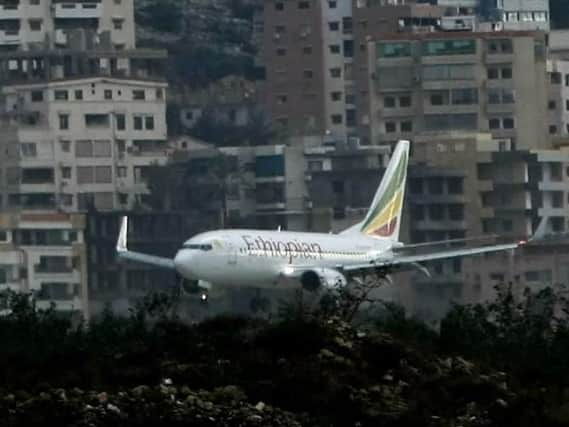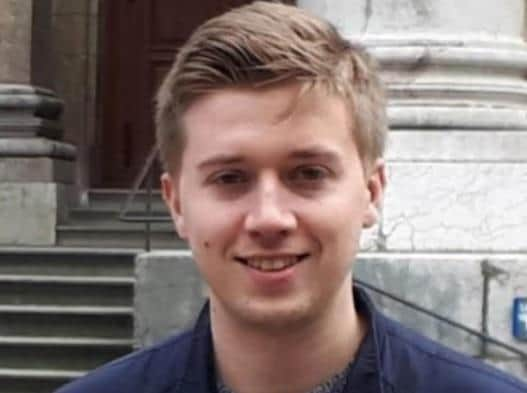Father of Penwortham aid worker killed in Ethiopian air disaster calls for planes to stay grounded.


IT consultant Mark Pegram today pleaded with the European Union Aviation Safety Agency to keep the plane grounded amid concerns by the families of passengers and crew after two crashes in the space of five months which claimed 346 lives.
"For me and many of the families of the 346 who died, why should we or anyone else not be sceptical that this aircraft is safe to fly?" said Mark.
Advertisement
Hide AdAdvertisement
Hide Ad"Sam, together with everyone else on those flights deserves to be honoured – and the best way to do that is to put safety first.


“That is why we’re calling on the EASA to ensure the 737 MAX remains grounded.”
Relatives of some of those killed in the Ethiopian Airways crash in March 2019 are being represented by specialist aviation lawyers at Irwin Mitchell. Working with colleagues in the US, they are continuing with court proceedings against Boeing in Illinois.
Although the Federal Aviation Administration (FAA) in the US has recently paved the way for the Boeing 737 MAX return to US skies, the families of victims and their lawyers say they remain concerned about the safety of the aircraft.
Advertisement
Hide AdAdvertisement
Hide AdCurrently the aircraft remains grounded across Europe following EASA’s decision to do so in March 2019, but this decision is expected to be reversed next week.
Patrick Ky, the executive director of EASA, has recently said he is “certain” that the 737 MAX is now safe to fly in Europe. This comment and EASA’s proposed Airworthiness Directive comes before publication of what is expected to be a detailed and independent report by EASA into the aircraft’s safety.
The official accident report in to the crash of Flight ET302 is also still awaited, although it is understood that it will not be available until the end of February.
Joanna Toole, 36, a United Nations consultant from Devon, was one of the passengers who died in the crash of Ethiopian Airlines Flight ET302.
Advertisement
Hide AdAdvertisement
Hide AdHer father, Adrian Toole, said today “In a meeting with EASA on September 16 we were told that the 737 MAX would not be allowed to return to European skies until the previous two accidents were fully understood and a copy of EASA’s detailed safety report was made available to us to consider.
"It now appears that EASA has made its decision to allow the Boeing 737 MAX to fly again, even though its full safety report has not been made available as promised and the official accident investigation report into the crash of Flight ET302 has still not been published.
"EASA’s conduct is both astonishing and deeply worrying. It is not in accordance with EASA’s previous assurances to us and it robs us and other interested parties of the opportunity to consider and make informed comment upon EASA’s recommendations and the logic of EASA’s decision making.
“We believe that commercial interests are being put before safety and we call on EASA not to take short cuts before allowing this aircraft to fly again in Europe.”
Advertisement
Hide AdAdvertisement
Hide AdClive Garner, one of the aviation law specialists at Irwin Mitchell representing the families involved, commented: “The families we represent are extremely concerned about EASA’s proposed Airworthiness Directive and the apparent decision to enable this aircraft to fly again in European skies.
“The introduction of the Boeing 737 MAX was a disaster. Boeing made a number of catastrophic errors and critically important information was concealed from the aviation regulators causing the loss of 346 men, women and children.
“Those who lost loved ones rightly want to ensure that this aircraft is safe before it flies again. To be able to meaningfully consider and comment upon this they must have sight of EASA’s safety report in relation to the 737 MAX together with key data and test results from EASA and the FAA, as well as the official accident report into the crash of Flight ET302. Despite requests, the families and other interested parties still have not been provided these essential documents and data.
”Based on what we and the families know already, there remain significant concerns about the safety of the Boeing 737 MAX.
Advertisement
Hide AdAdvertisement
Hide Ad"Many, like me, feel that while some of the revisions specified by the FAA and EASA are likely to improve the safety of the aircraft, they do not go far enough to adequately protect the safety of future passengers.”
Vincent Nichol, another of the Irwin Mitchell Aviation Law specialists representing the families added: “We are very disappointed and concerned that vital opportunities have been missed by the FAA and EASA to improve the aircraft’s safety.
"Based upon what we know, concerns remain that the proposals do not adequately address the root problem here – the aerodynamic instability of the 737 MAX and the steps proposed to counter this including the revised MCAS software.”
Thanks for reading. If you value the work our professional journalists do, trying to keep you informed of what is happening in your area, then please consider subscribing to our unrivalled online service. Try us today by clicking here
Comment Guidelines
National World encourages reader discussion on our stories. User feedback, insights and back-and-forth exchanges add a rich layer of context to reporting. Please review our Community Guidelines before commenting.